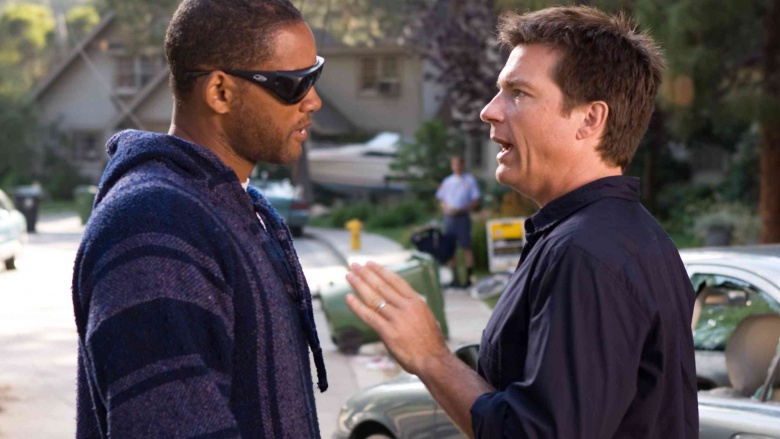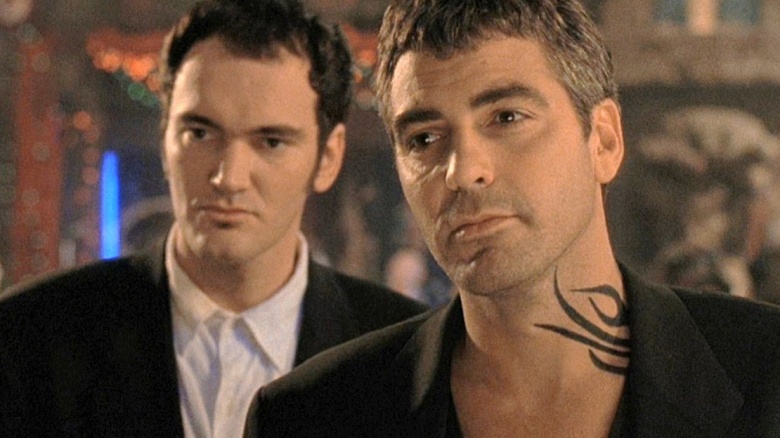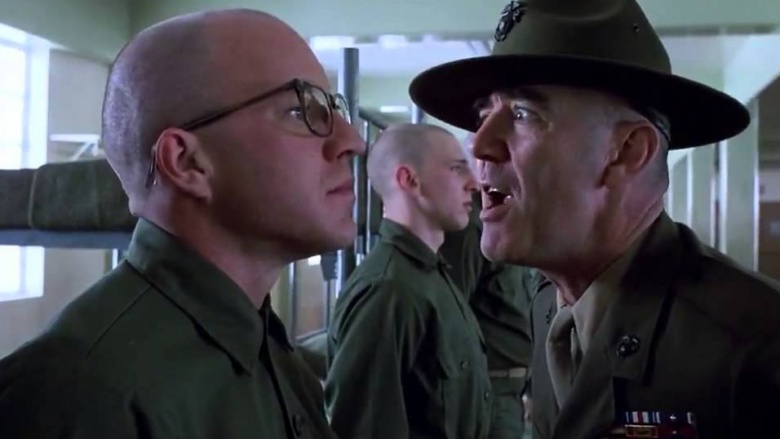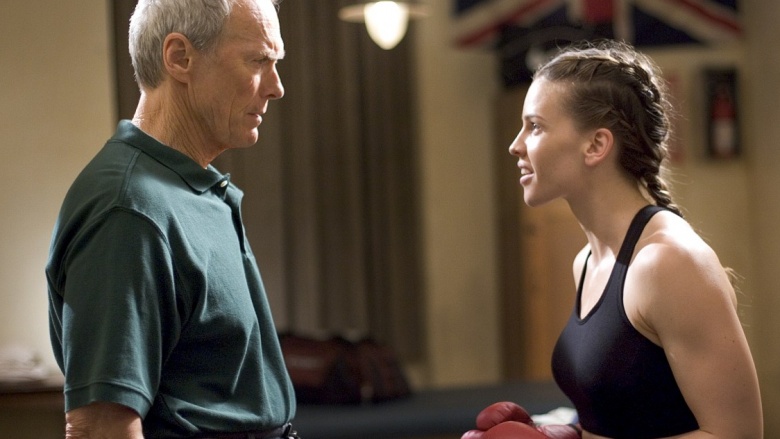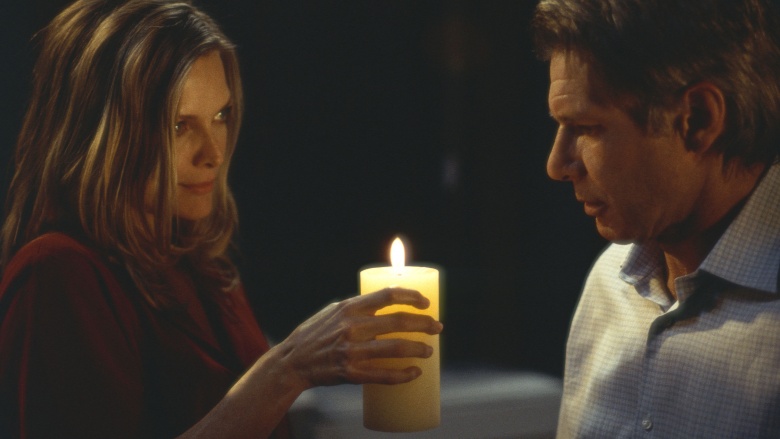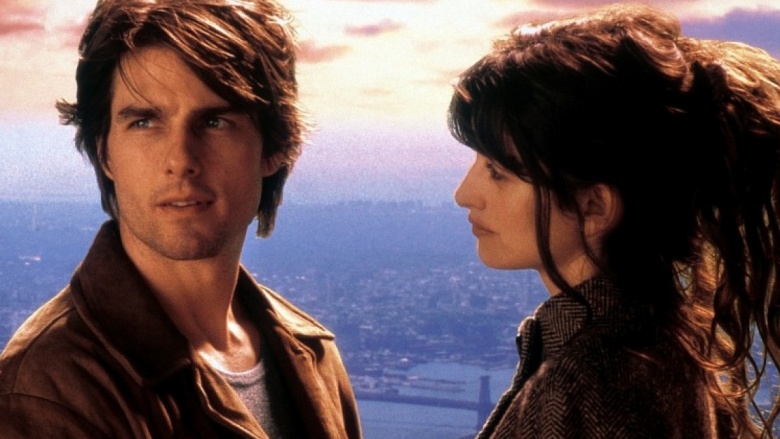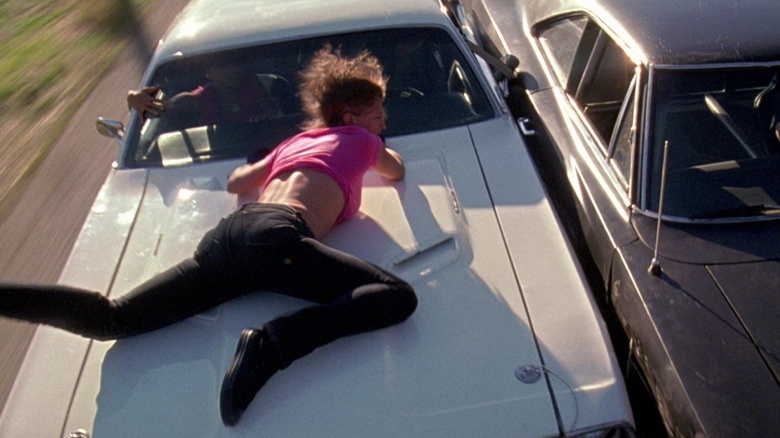Movies That Completely Changed Halfway Through
Most of the time when we see a new movie, we can place it in any one of many convenient categories. There are rom-coms, action and adventure movies, period dramas, buddy cop movies—the list goes on. These categories are sometimes helpful—letting us know what to expect and how to respond. But sometimes the film we think we're watching is not the film the credits roll on. Here are a few movies that don't go from A to B.
As ever, beware: spoilers follow.
Hancock (2008)
Hancock (Will Smith) is a drunk and disorderly super hero with amnesia. While he's stopping crimes and saving lives in L.A., he's causing too much damage in the process. As such, the city wants him under lock and key. In steps Ray Embrey (Jason Bateman), who offers to help Hancock improve his public image. Everything goes well until Hancock meets Ray's wife Mary (Charlize Theron). In a shocking twist, it turns out she's a superhero too! But she's not just any random superhero: she's his partner for eternity who he can't be near or they will both lose their powers. This movie is both a funny twist on a crowded genre, and a superhero origin story that we weren't expecting. After a series of fight scenes that nearly kill them both because their powers are waning, Hancock ends up in New York, reformed and popular, and happy with his newfound backstory.
From Dusk Till Dawn (1996)
It seems like Quentin Tarantino might have suffered a psychological break while writing this movie, and woke up in front of a Nosferatu poster. The movie begins with a pair of bank robbers on the run from the police. They take hostages, rape hostages, kill hostages, take more hostages, then force those hostages to smuggle them across the border in a Winnebago. They arrive at an isolated strip club where the robbers plan to meet their contact, but, unbeknownst to us (and the characters), the Winnebago has actually driven into a vampire movie. The characters recover quickly, though, and do battle with the vamps—most of them getting killed. But the vamps are also destroyed in typically bloody Tarantino style, with special mention going to the creative use of a glitter ball for the final escape. This movie has become such a cult favorite that now almost no-one is surprised by the unexpected key change.
Full Metal Jacket (1987)
Full Metal Jacket is an amazing movie, but if it had been directed by anyone other than Stanley Kubrick it would have bombed. The movie that made Vincent D'Onofrio a star has the biggest split personality on this list—the two halves barely roped together by the general theme of the Vietnam War and that the characters that appear in both halves. Part one takes place in boot camp and focuses on the bullying and breakdown of Private Leonard 'Gomer Pyle' Lawrence, played by D'Onofrio. Part two takes place in Vietnam and can be simply described as just another war-is-hell movie, but with better music and a ton of great quotable dialogue.
Million Dollar Baby (2004)
Maggie (Hilary Swank), a waitress with boxing aspirations, shows up at a boxing gym looking for a trainer. Frankie (Clint Eastwood) initially refuses, but then agrees. So begins a rags to riches underdog boxing movie. Maggie wins fight after fight, climbs the rankings, and reveals herself to be a natural boxer—until she breaks her neck... and so begins a hospital drama that explores questions about the quality of life for quadriplegics, and the ethics of assisted suicide. Imagine Rocky becomes Philidelphia but without the lawsuits.
What Lies Beneath (2000)
What Lies Beneath begins as a seemingly straightforward ghost story—moving furniture, creaking doors, and suspicious goings-on next door. However Claire (Michelle Pfeiffer), the lonely stay at home wife, discovers that the cause of the disturbances is much closer to home than she realized. The casting of Harrison Ford as the socially proud husband makes clever use of his acting history, playing the audience against itself and its expectations. Ford seems to be playing his usual role of casually pleasant and handsome middle aged man, but the film shifts. Suddenly the seemingly classic horror flick is force-fed an adulterous husband and murderer and everything turns on its head.
Vanilla Sky (2001)
David (Tom Cruise) is a wealthy bachelor who meets the beautiful Sofia (Penélope Cruz) and falls in love. Unfortunately his jealous ex Julie (Cameron Diaz) hears of the new relationship and tries to kill them both in a car crash. David survives but is injured. His life spirals out of control as he fails to come to terms with his permanent disfigurement. But then he gets control again, gets back together with his girlfriend, and manages to get his face fixed despite being told it couldn't be done. Cue the happily ever after montage. But the movie doesn't end here—it hasn't gone Matrix-y enough yet. Things start to get weird. He starts seeing things, things change in impossible ways, and he ends up in jail for murder. But it's okay, it was all a dream! He has been in cryogenic sleep for 150 years waiting for the day when he could get his face fixed. Unfortunately the dreams started going wrong (that's when it got weird). He is given the choice of continuing to sleep (but not in a weird way), or waking up (red pill/blue pill). He decides to wake up, but for some reason has to jump off a tall building to do it.
World War Z (2013)
Based on (but barely anything like) a novel by Max Brooks, this big budget blockbuster went through numerous rewrites before (and once during) production, and it shows. Gerry Lane (Brad Pitt) is called out of retirement to search the world for a cure to the zombie plague that threatens to wipe out humanity. That results in numerous globe-hopping scenes where Lane barely escapes impressive hordes of CGI generated zombies. Lane makes it through, sacrificing supporting characters at every plot turn except at the big one toward the end. The movie was already in production when a new writer was called in to change the third act. And what was a balls-out global avalanche of zombies, with Lane barely riding the leading edge, turns into a low budget horror suspense movie set in Wales. Out are the rushing undead hordes pitted against the latest military tech, and in are a handful of occasionally interested doped up mental patients and a collection of lab geeks.
Death Proof (2007)
Part one (filmed on dirty celluloid): A group of girls are out for a night on the town before a weekend away at a lakeside cabin. One is a popular radio DJ and has set up her friend to give lap dances to any man who speaks a special phrase. Enter Stuntman Mike (Kurt Russell), an aging stunt driver who is briefly made fun of by some bros. You expect him to kill them later, but he doesn't. There's some unimportant dialogue, then Stuntman Mike gets the lap dance. After explaining how his stunt car is "death proof," he crashes head-on into the car carrying the girls to the cabin, killing them all instantly and graphically. A cop suspects vehicular homicide but can't prove it. Then Quentin Tarantino hits CTRL-ALT-DEL, and starts again, effectively rendering the whole first half of the movie as largely unnecessary (but still pretty cool) exposition.
Part two (filmed first in monochrome, then in digital color): A second group of girls are on the way to the airport to pick up a friend. Russell appears and does some creepy stuff. And then the girls engage in a period of seemingly endless dialogue that apparently exists only to set up for the climactic (and totally amazing) final car chase, changing the film from a suspenseful (if talky) thriller into a girl-power action-revenge-flick. You get the feeling Tarantino could keep going: exploring the many options presented by the combination of a car full of girls being pursued by a homicidal stuntman. It could have been a mini-series. It probably should have been.

